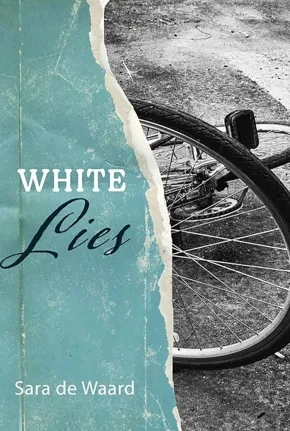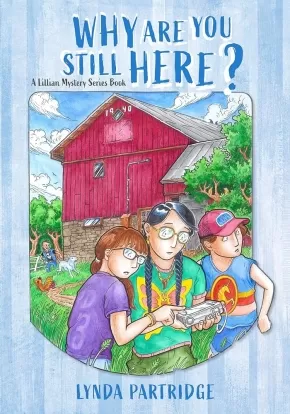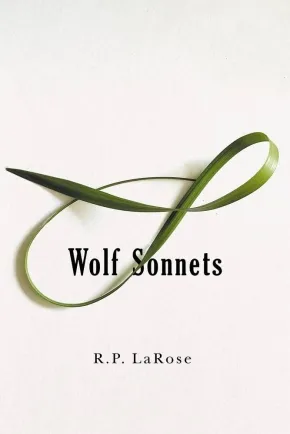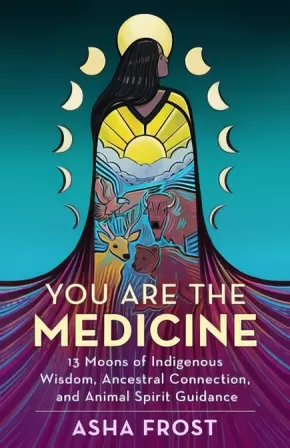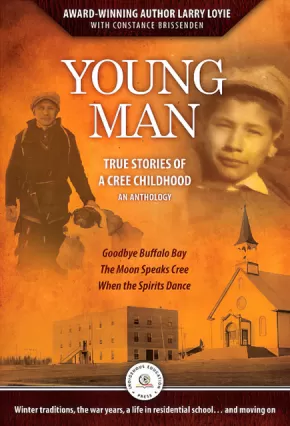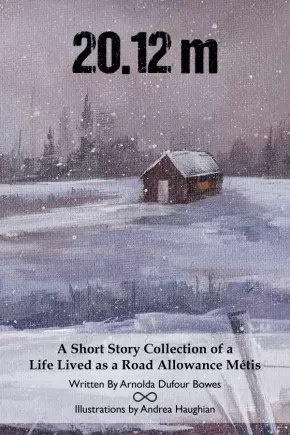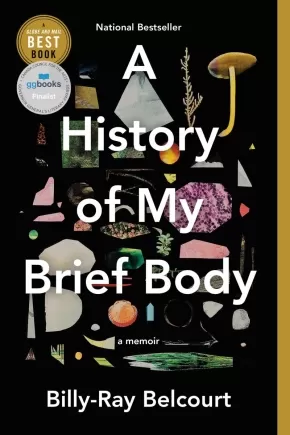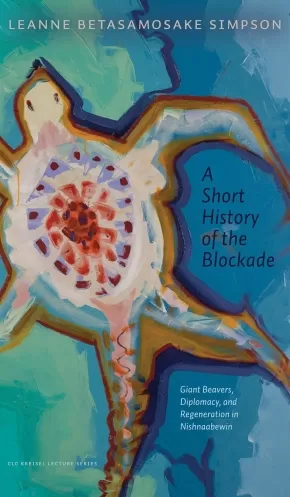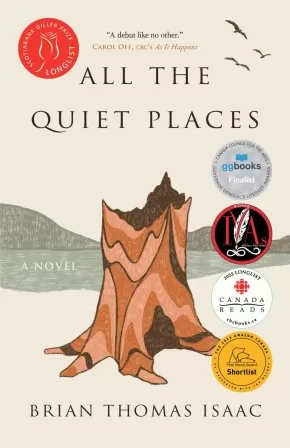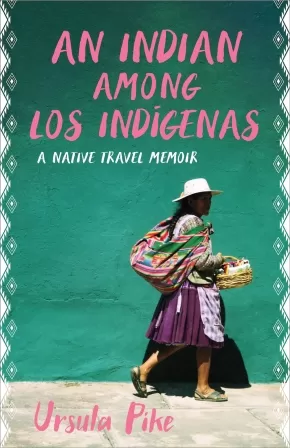
Indigenous Peoples
481
-
495
of
1080 Results;
Sort By
Go To
of 72
White Lies
$15.95
Format:
Paperback
Text Content Territories:
Indigenous;
ISBN / Barcode: 9781770866492
Synopsis:
Synopsis:
Missy’s sweet sixteenth is just around the corner, but her last three birthdays haven’t exactly been cause for celebration. Her beloved little brother died when she turned thirteen and now birthdays are just painful reminders of the void in their lives. If only she had walked him to school that morning like she was supposed to ...
To add fuel to the fire, Missy’s mom was arrested just before she could blow out the candles on her fifteenth birthday.
To escape her guilt and her father’s alcohol-induced rages, Missy volunteers at a nearby store where she busies herself to shut out the feelings that her therapist seems to be pushing her to feel.
But then Missy meets Luke — a new classmate she cannot stop thinking about. Luke understands what she is going through more than anybody, but will Missy ever be able to let him in?
Educator Information
Recommended for ages 13 - 18.
Additional Information
224 pages | 5.37" x 8.00" | Paperback
Why Are You Still Here?: A Lillian Mystery
$19.95
Format:
Paperback
Text Content Territories:
Indigenous Canadian;
ISBN / Barcode: 9781988824826
Synopsis:
Synopsis:
This book continues the charming story of Lillian and Kokomis, the award-winning book about a complex and not-always-lovable foster kid who finds a sense of peace and belonging from a surprising spirit that returns her to traditional ways, legends, and Indigenous ways of knowledge. Why Are You Still Here? uncovers the mystery of ghosts and spirits that live behind a window at the family farm.
Reviews
"This is a page-turner story with a long-awaited validation of how children have a natural spiritual intelligence. This is a gift in children that needs to be nurtured. Bravo Lillian!" — Robin Decontie MSW, CFNHM, Director, Kitigan Zibi Health and Social Services
"It was my pleasure to pre-read the latest book in the Lillian series. Lynda Partridge takes the reader from the easy chair to the farm to join Grace, Chloe, and Lillian as they work together to understand the mysterious messages coming from the old barn. Reading this story, I was captured by the blending of tradition, culture and the current day pandemic. I also appreciated the messages that Lynda weaves into her writing about appreciating the wisdom of the children as well as the elders. A very good read for all ages!…" —Leo Massi MSW, RSW, Executive Dircetor, H-N REACH
"Lynda Partridge’s latest book from the life of l is an excellent read for children and adults as well. I found myself enthralled, deeply curious about the mystery in the barn. Lynda takes you into the lives of the family on the farm, blending her Indigenous culture and spirituality into this mystery. As you read; you get caught up, the story is so thought provoking and very difficult to put down." —Sandy Herkimer
Educator Information
Recommended for grades 6 to 9.
This book is part of the Indigenous Spirit of Nature series.
This book is also the second book in the Lillian Mystery series.
Additional Information
128 pages | 6.00" x 9.00" | 10 Black and White Illustrations | Paperback
Wolf Sonnets
$19.95
Format:
Paperback
Text Content Territories:
Indigenous Canadian; Métis;
Reading Level: N/A
ISBN / Barcode: 9781550656091
Synopsis:
Synopsis:
In his commanding poetry debut, Wolf Sonnets, R. P. LaRose undoes the sonnet's classical constraints, retooling the form for current political circumstances. Packed with family lore, these poems reflect on how deeply we can trust the terms we use to construct our identity. A proud citizen of the Métis Nation, LaRose even questions his right to identify as such: "I was made in someone else's home," he writes. Wolf Sonnets is verse obsessed with names, infinity, numbers, categories, and interconnectedness. Depicting his ancestors as wolves--symbols of survival and protection--LaRose brings fresh insight to his wider poetic project: castigating the inequality, greed, and racism inherent to colonialism.
Additional Information
80 pages | 5.00" x 7.50" | Paperback
Worth More Standing: Poets and Activists Pay Homage to Trees
$24.95
Editors:
Format:
Paperback
Text Content Territories:
Indigenous Canadian;
ISBN / Barcode: 9781773860824
Synopsis:
Synopsis:
Poets, both settler and Indigenous, pay tribute to trees through reflections on the past, connections to the present, and calls for the protection of our future.
In Worth More Standing: Poets and Activists Pay Homage to Trees, celebrated poets and activists pay homage to the ghosts of lost forests and issue a rallying cry to protect remaining ancient giants and restore uncolonized spaces.
Themes of connection, ecology, grief, and protection are explored through poems about trees and forests written by an impressive number of influential poets, several of whom have attended the recent Fairy Creek blockades and still others who defended BC's old growth trees in Clayoquot Sound nearly 30 years ago.
Contributors include ninth Parliamentary Poet Laureate Louise Bernice Halfe-Sky Dancer, GG winner Arleen Paré, Canadian icon bill bissett, Griffin Poetry Prize winner Eve Joseph, ReLit Award winner Patrick Friesen, Joy Kogawa, Fiona Tinwei Lam, Harold Rhenisch, Jay Ruzesky, John Barton, Kate Braid, Kim Trainor, Kim Goldberg, Pamela Porter, Patricia and Terence Young, Russell Thornton, Sonnet L’Abbé, Susan McCaslin, Susan Musgrave, Tom Wayman, Trevor Carolan, Yvonne Blomer, Zoe Dickinson and the late Pat Lowther.
Reviews
"This anthology grounds us in the earth's daily miracles, also known as trees, reminding us not to take them for granted. These poems acknowledge how we rely on and are part of a life force much bigger and wiser than us, giving us glimpses into the sacredness that trees make as they unconditionally transform sunlight into 'nourishing air.' From love to grief to gratitude to awe, this collection gives us lessons in the language of trees, crucial lexicons with which to navigate climate emergency." -Rita Wong, activist-poet, author of Current, Climate: The Poetry of Rita Wong
"In this eclectic grove of poems written and gathered on the body of trees, poets inflect, root, bend towards the mythopoetic, listening with love to arboreality, walking the path towards tree immersion. 'Make no mistake, I saw them relax their limbs and droop. Settling into their dreams.' A language that will always mystify and sustain us. Enjoy this collection and touch wood. 'tree, tell me what have you done with death.' 'today i ate chainsaws for breakfast.'" -Mona Fertig, editor of Love of the Salish Sea Islands and 111 West Coast Literary Portraits
"The tree is in the midst of an intellectual renaissance, judging by all the books on the lifeways, politics and communicative tendencies of networked forests. But poets have always been a People of the Tree, and the arboreal fund gathered in Worth More Standing covers the roots and branches of the entwined process of 'becoming both human and tree.' Our fate and the fate of forests have never been more entangled. This is a gorgeous and necessary collection, to be returned to again and again."-Governor General's Award-nominated poet Stephen Collis
"A masterpiece in cultural diversity unified with a call to action, Worth More Standing is a celebratory awakening to all Earth Citizens to see trees as far more valuable than in board feet of lumber. Our unified purpose must be to honour the old growth as we would our ancestors. Such forests and trees have been with us as long as we have been human. Their destruction means the loss of an essential component of our humanity." -Paul Stamets, award-winning mycologist, author, and bee protector
Additional Information
240 pages | 6.00" x 9.00" | Paperback
Authenticity Note: Not all of this work's contributors are Indigenous.
Yesterday's Rain
$12.95
Text Content Territories:
Indigenous American; Native American;
ISBN / Barcode: 9781939053428
Synopsis:
Synopsis:
Yesterday's Rain is the second book in the Sydney's Journey Series. Sydney is still working through her guilt over being a bully at her previous school on the White Earth Reservation. When she accidently takes a punch in the face that was aimed at her gay friend, everyone expects her to fight back, but her response is totally unexpected. Bullies can change, as Sydney proves at her new school. Can Sydney help her best friend heal an old friendship by demonstrating forgiveness?
Educator & Series Information
Recommended for grades 7 to 9.
Fry Reading Level: 4
This book is part of the PathFinders Collection of Indigenous Hi-Lo- novels. Interest level is pre-teen on up.
The PathFinders series of Hi-Lo (high interest, low readability) novels offers the following features:
• Indigenous teen protagonists
• Age-appropriate plots
• 2.5 – 4.5 Reading Level
• Contemporary and historical fiction
• Indigenous authors
The PathFinders series is from an American publisher. Therefore, Indigenous terminology in the PathFinders books is not the same as Canadian Indigenous terminology. This prompts a useful teaching moment for educators in discussing appropriate terminology use in Canada.
This book is Book 2 in the Sydney's Journey series.
Additional Information
118 pages | 4.50" x 6.75" | Paperback
You Are the Medicine: 13 Moons of Indigenous Wisdom, Ancestral Connection, and Animal Spirit Guidance
$23.99
Format:
Paperback
Text Content Territories:
Indigenous Canadian; First Nations; Anishinaabeg; Ojibway;
Reading Level: N/A
ISBN / Barcode: 9781401963507
Synopsis:
Synopsis:
Indigenous Medicine Woman Asha Frost invites readers to learn the healing medicine of the 13 Ojibway moons and the spirit animals that will guide their wisdom journey.
If you are drawn to Indigenous Medicine ways, you, too, have power and beauty in your own lineage waiting to be discovered.
Follow the path of the 13 Ojibway moons with animal spirits as your guides to unlock powerful teachings that will help you directly experience your own medicine connection to your inherent healing powers. If you feel you don't have access to your roots, ancestors, or spiritual connection and you look outside of yourself for answers, you are forgetting the medicine you need lives within you.
Through storytelling, personal reflections, ceremonies, rituals, and shamanic journeys, readers will learn to apply ancient wisdom and ancestral medicine to their own lives in meaningful ways that are respectful and conscious of the stolen lands, lives, and traditions of Indigenous peoples.
Discover how to:
• Ground and root into your own lineage and your ancestral guides.
• Connect to spirit and your innate healing powers in your own unique way.
• Practice self-care and rest on your journey.
• Return ancestral ways of cleansing and purifying.
• Trust and surrender in order to manifest.
• Remember your dreams and use them in your daily life.
• Release self-doubt, fear, disconnection, and insecurity.
Additional Information
280 pages | 5.50" x 8.50" | Paperback
Young Man: True Stories of a Cree Childhood: An Anthology
$39.99
Format:
Paperback
Text Content Territories:
Indigenous Canadian; First Nations; Cree (Nehiyawak);
ISBN / Barcode: 9781990297304
Synopsis:
Synopsis:
Larry Loyie, award-winning Cree author, educator, and playwright writes honestly, tenderly, with laughter as well as sadness about his traditional childhood interrupted by six years in residential school. Three books in the Lawrence Series are included in Young Man, True Stories of a Cree Childhood. This book includes 53 photographs from the author’s life.
Educator Information
Recommended for grades 4 to 9.
This anthology includes three books:
- Goodbye Buffalo Bay
- The Moon Speaks Cree
- When the Spirits Dance
Additional Information
200 Pages | Paperback
20.12m: A Short Story Collection of a Life Lived as a Road Allowance Métis
$20.00
Artists:
Format:
Paperback
Text Content Territories:
Indigenous Canadian; Métis;
ISBN / Barcode: 978-1-926795-99-7
Synopsis:
Synopsis:
20.12m: A Short Story Collection of a Life Lived as a Road Allowance Métis celebrates and acknowledges the humble living conditions of Métis Road Allowance families and it exemplifies their grit and tenacity to survive and indeed succeed in the face of so many hardships. “20.12m” refers to the narrow width of many of the road allowances throughout the prairies. This unoccupied crown land became one of the meagre options for many impoverished Métis families as so few owned land.
In this passionate coming of age book, Arnolda Dufour Bowes honours the true-life experiences of her father, Arnold Charles Dufour, a resident of the Punnichy, Saskatchewan Road Allowance community. The strength of the oral tradition has kept these stories solidly in place in Arnolda’s memory. Weaving true elements with those drawn from her own creativity, these five engaging stories share a lived experience that is little-known to most Canadians. This collection of cherished remembrances of this Métis family will also strongly resonate with many other Métis families who lived similar lives. In keeping with the family focus, Arnolda’s sister, Andrea Haughian, skillfully complements these poignant stories with expressive illustrations, which both honour and richly portray road allowance life.
Educator Information
Recommended by publisher for secondary, post-secondary, and adult readers.
Additional Information
Paperback
A History of My Brief Body (PB)
$19.95
Format:
Paperback
Text Content Territories:
Indigenous Canadian; First Nations; Cree (Nehiyawak); Woodland Cree; Woods Cree; Driftpile First Nation;
Grade Levels: University/College;
ISBN / Barcode: 9780735237803
Synopsis:
Synopsis:
A slim but electrifying debut memoir about the preciousness and precariousness of queer Indigenous life.
Opening with a tender letter to his kokum and memories of his early life on the Driftpile First Nation, Billy-Ray Belcourt delivers a searing account of Indigenous life that’s part love letter, part rallying cry.
With the lyricism and emotional power of his award-winning poetry, Belcourt cracks apart his history and shares it with us one fragment at a time. He shines a light on Canada’s legacy of colonial violence and the joy that flourishes in spite of it. He revisits sexual encounters, ruminates on first loves and first loves lost, and navigates the racial politics of gay hookup apps. Among the hard truths he distills, the outline of a brighter future takes shape.
Bringing in influences from James Baldwin to Ocean Vuong, this book is a testament to the power of language—to devastate us, to console us, to help us grieve, to help us survive. Destined to be dog-eared, underlined, treasured, and studied for years to come, A History of My Brief Body is a stunning achievement from one of this generation’s finest young minds.
Awards
- Winner of the Hubert Evans Non-Fiction Prize
Reviews
“Bursting with all the movements of sex, riot, and repose, this book presents us with a shock of recognition and reclamation, and we are better for it―punch drunk and aching but, oh, so much better. I’m gutted by his brilliant mind.” ―Cherie Dimaline
“Displays a pervading lucidity, akin to dreaming while standing wide awake, feet firmly on the soil . . . [A] fascinating exploration of the impact of colonialism in all its ramifications.” —Quill & Quire
Additional Information
192 pages | 5.01" x 7.50" | Paperback
A Perfect Likeness: Two Novellas
$19.95
Format:
Paperback
Text Content Territories:
Indigenous Canadian; First Nations; Anishinaabeg; Ojibway;
ISBN / Barcode: 9781459828360
Synopsis:
Synopsis:
The volume brings together two previously published novellas by Richard Wagamese, Him Standing and The Next Sure Thing, with a foreword from author Waubgeshig Rice. Both stories follow the lives of young men who have dreams for a better future. In their search for fame and fortune, Cree Thunderboy and Lucas Smoke end up on paths where their biggest challenge is staying true to themselves.
In Him Standing, Lucas Smoke learns the art of carving from his grandfather. He discovers that he is a natural; he can literally make people come to life in wood. But when Lucas is asked to carve a spirit mask by a mysterious stranger, he quickly learns that his skill with a knife could cost him his dreams.
In The Next Sure Thing, Cree Thunderboy has two things he does well: playing blues guitar and picking winning horses at the track. Picking winners is just meant to be a means to an end—Cree's goal is to make his living playing the blues. He meets a powerful man at the racetrack who convinces him he can parlay his special skill with the horses into a shot at the fame and fortune he seeks.
Celebrated author Richard Wagamese artfully crafts these thrilling yet vulnerable stories of two young men trying to find their place in the world.
Educator Information
Themes: Indigenous, Coming of Age, Own Voice, Carving, Horse Racing.
Both stories in this collection are about a young Indigenous man trying to find his way and leaning on his background and culture to help him.
Both Him Standing and Next Sure Thing have a surreal or magical element.
Recommended in the Canadian Indigenous Books for Schools resource collection for grades 9 to 12 for English Language Arts.
Additional Information
248 pages | 5.50" x 8.00"
A Short History of the Blockade: Giant Beavers, Diplomacy, and Regeneration in Nishnaabewin
$12.99
Format:
Paperback
Grade Levels: 12; University/College;
ISBN / Barcode: 9781772125382
Synopsis:
Synopsis:
In A Short History of the Blockade, award-winning writer Leanne Betasamosake Simpson uses Michi Saagiig Nishnaabeg stories, storytelling aesthetics, and practices to explore the generative nature of Indigenous blockades through our relative, the beaver—or in Nishnaabemowin, Amik. Moving through genres, shifting through time, amikwag stories become a lens for the life-giving possibilities of dams and the world-building possibilities of blockades, deepening our understanding of Indigenous resistance, as both a negation and an affirmation. Widely recognized as one of the most compelling Indigenous voices of her generation, Simpson’s work breaks open the intersections between politics, story, and song, bringing audiences into a rich and layered world of sound, light, and sovereign creativity. A Short History of the Blockade reveals how the practice of telling stories is also a culture of listening, “a thinking through together,” and ultimately, like the dam or the blockade, an affirmation of life.
Educator Information
Subjects & Keywords: Social Sciences, Literary Criticism, Indigenous Studies; Indigenous resistance, blockades, beaver dams, Nishnaabeg storytelling, regeneration, generative resistance, Canadian Indigenous literature, land defenders, water defenders, practice of wisdom, Indigenous stories, Indigenous authors.
Recommended in the Canadian Indigenous Books for Schools collection for grades 10 to 12 for these subjects: Social Studies, English Language Arts, English First Peoples
Additional Information
88 pages | 5.25" x 9.00"
All the Quiet Places: A Novel
$24.00
Format:
Paperback
Text Content Territories:
Indigenous Canadian; First Nations; Salish; Interior Salish; Syilx (Okanagan);
ISBN / Barcode: 9781990071027
Synopsis:
Synopsis:
Brian Isaac's powerful debut novel All the Quiet Places is the coming-of-age story of Eddie Toma, an Indigenous (Syilx) boy, told through the young narrator's wide-eyed observations of the world around him.
It's 1956, and six-year-old Eddie Toma lives with his mother, Grace, and his little brother, Lewis, near the Salmon River on the far edge of the Okanagan Indian Reserve in the British Columbia Southern Interior. Grace, her friend Isabel, Isabel's husband Ray, and his nephew Gregory cross the border to work as summer farm labourers in Washington state. There Eddie is free to spend long days with Gregory exploring the farm: climbing a hill to watch the sunset and listening to the wind in the grass. The boys learn from Ray's funny and dark stories. But when tragedy strikes, Eddie returns home grief-stricken, confused, and lonely.
Eddie's life is governed by the decisions of the adults around him. Grace is determined to have him learn the ways of the white world by sending him to school in the small community of Falkland. On Eddie's first day of school, as he crosses the reserve boundary at the Salmon River bridge, he leaves behind his world. Grace challenges the Indian Agent and writes futile letters to Ottawa to protest the sparse resources in their community. His father returns to the family after years away only to bring chaos and instability. Isabel and Ray join them in an overcrowded house. Only in his grandmother's company does he find solace and true companionship.
In his teens, Eddie's future seems more secure—he finds a job, and his long-time crush on his white neighbour Eva is finally reciprocated. But every time things look up, circumstances beyond his control crash down around him. The cumulative effects of guilt, grief, and despair threaten everything Eddie has ever known or loved.
All the Quiet Places is the story of what can happen when every adult in a person's life has been affected by colonialism; it tells of the acute separation from culture that can occur even at home in a loved familiar landscape. Its narrative power relies on the unguarded, unsentimental witness provided by Eddie.
Awards
- 2022 Indigenous Voices Awards winner
Reviews
"What a welcome debut. Young Eddie Toma’s passage through the truly ugly parts of this world is met, like an antidote, or perhaps a compensation, by his remarkable awareness of its beauty. This is a writer who understands youth, and how to tell a story." —Gil Adamson is the winner of the Writers’ Trust Fiction Prize for Ridgerunner
"All the Quiet Places is a deftly crafted, evocative story about the trials of growing up Indigenous. Brian Thomas Isaac’s characters are complex, relatable, and overall, beautifully human." —Waubgeshig Rice is the bestselling author of Moon of the Crusted Snow
"All the Quiet Places is the kind of novel that works its way into your soul. Essentially, it's a tale of childhood, all the wonders and tragedies, that befall a young boy on an Okanagan Reserve in the middle of the last century. Familiar, yet unique, Eddie's story will captivate the reader. The best compliment I could bestow on this book is. . . I wish it was one or two chapters longer. I wanted more." —Drew Hayden Taylor is from the Curve Lake First Nation and is the author of many books including Chasing Painted Horses
"On par with the brilliance of James Welch's Winter in The Blood and Ruby Slipperjack's Little Voice, Brian Thomas Isaac has given us a startling read that'll live wire your soul and haunt you for a good long while. Pure brilliance. Wow." —Richard Van Camp is the author of The Lesser Blessed and Moccasin Square Gardens
Educator Information
Keywords: Coming of Age; Own Voices; Indigenous
Recommended in the Canadian Indigenous Books for Schools resource collection as being useful for grades 11 and 12 for English Language Arts and Social Studies.
Additional Information
288 pages | 5.50" x 8.50"
An Indian among los Indígenas: A Native Travel Memoir (HC) (5 in Stock)
$39.95
Format:
Hardcover
Text Content Territories:
Indigenous American; Native American; Karuk; Indigenous South American; Indigenous Peoples in Bolivia;
Grade Levels: 12; University/College;
ISBN / Barcode: 9781597145275
Synopsis:
Synopsis:
A gripping, witty memoir about indigeneity, travel, and colonialism
When she was twenty-five, Ursula Pike boarded a plane to Bolivia and began her term of service in the Peace Corps. A member of the Karuk Tribe, Pike sought to make meaningful connections with Indigenous people halfway around the world. But she arrived in La Paz with trepidation as well as excitement, “knowing I followed in the footsteps of Western colonizers and missionaries who had also claimed they were there to help.” In the following two years, as a series of dramatic episodes brought that tension to boiling point, she began to ask: what does it mean to have experienced the effects of colonialism firsthand, and yet to risk becoming a colonizing force in turn?
An Indian among los Indígenas, Pike’s memoir of this experience, upends a canon of travel memoirs that has historically been dominated by white writers. It is a sharp, honest, and unnerving examination of the shadows that colonial history casts over even the most well-intentioned attempts at cross-cultural aid. It is also the debut of an exceptionally astute writer with a mastery of deadpan wit. It signals a shift in travel writing that is long overdue.
Reviews
“A brutally honest and badly needed story. . . Witty and clearly written, this memoir is a must-read, not just for Peace Corps volunteers, anthropologists, and others working in foreign lands, but for everyone—all of us finding ourselves in an ever increasing diverse and complex cultural landscape.”—Greg Sarris, author of How a Mountain was Made
“Ursula Pike's memoir is unlike any other I've read, with her perceptive, always-seeking, and lovely narrative voice. . . No one's written about the Peace Corps like this, with the details of food and family and landscape told through the vision of an Indigenous woman finding new stories in a deeply-rooted place miles from her own.”—Susan Straight
“In Ursula Pike’s perceptive and poignant debut memoir, a North American Indian woman knowingly enters the complex dynamics of voluntourism and discovers aspects about her own identity, colonialism, and comparative privilege while navigating the vivid landscapes and personalities of a small Bolivian community in the Andes.”—Chip Livingston, author of Crow-Blue, Crow-Black
“The Indigenous peoples Pike lived and worked with speak loudly from these pages, challenging many of us to check privileges we didn’t know we had, demanding the right to be complex, strong, and human. This book is all heart, all vulnerability, as a young California Indian woman makes family far from home.”—Deborah Miranda, author of Bad Indians: A Tribal Memoir
Additional Information
240 pages | 5.50" x 8.50"
Aquí era el paraíso / Here Was Paradise (1 in stock, in reprint)
$19.99
Artists:
Format:
Hardcover
Text Content Territories:
Indigenous Central American; Maya;
ISBN / Barcode: 9781773064956
Synopsis:
Synopsis:
A collection of poetry by one of the greatest Indigenous poets of the Americas about the vanished world of his childhood — that of the Maya K’iche’.
Aquí era el paraíso / Here Was Paradise is a selection of poems written by the great Maya poet Humberto Ak’abal. They evoke his childhood in and around the Maya K’iche’ village of Momostenango, Guatemala, and also describe his own role as a poet of the place.
Ak’abal writes about children, and grandfathers, and mothers, and animals, and ghosts, and thwarted love, and fields, and rains, and poetry, and poverty, and death.
The poetry was written for adults but can also be read and loved by young people, especially in this collection, beautifully illustrated by award-winning Guatemalan-American illustrator Amelia Lau Carling.
Ak’abal is famous worldwide as one of the great contemporary poets in the Spanish language, and one of the greatest Indigenous poets of the Americas. Ak’abal created his poems first in K’iche’, then translated them into Spanish.
Educator Information
Recommended for ages 9+.
Dual-language in English and Spanish.
Key Text Features: foreword, biographical information, poems, translation
Correlates to the Common Core State Standards in English Language Arts:
CCSS.ELA-LITERACY.RL.4.2
Determine a theme of a story, drama, or poem from details in the text; summarize the text.
CCSS.ELA-LITERACY.RL.5.4
Determine the meaning of words and phrases as they are used in a text, including figurative language such as metaphors and similes.
CCSS.ELA-LITERACY.RL.5.5
Explain how a series of chapters, scenes, or stanzas fits together to provide the overall structure of a particular story, drama, or poem.
CCSS.ELA-LITERACY.RL.5.7
Analyze how visual and multimedia elements contribute to the meaning, tone, or beauty of a text (e.g., graphic novel, multimedia presentation of fiction, folktale, myth, poem).
CCSS.ELA-LITERACY.RL.6.2
Determine a theme or central idea of a text and how it is conveyed through particular details; provide a summary of the text distinct from personal opinions or judgments.
CCSS.ELA-LITERACY.RL.6.5
Analyze how a particular sentence, chapter, scene, or stanza fits into the overall structure of a text and contributes to the development of the theme, setting, or plot.
Excerpt from the Introduction by Patricia Aldana: "In this book we find poems about children, and grandfathers, and mothers, and animals, and ghosts, and thwarted love, and fields, and rains, and poetry, and poverty, and death. Ak'abal never pretended that life in his world was easy. The history of Guatemala is complex. It has the highest Indigenous population as a percentage of any country in the Americas. And Maya people have suffered terrible discrimination, violence and poverty since the arrival of the Europeans. But Ak'abal's poems convey how all his world's elements also came together to create a deep, rich reality.... Reading these wonderful poems can remind us that it is still possible to fight to protect this beautiful world and the people who live in and on it."
Additional Information
172 pages | 6.50" x 8.31" | 14 Colour Illustrations | Hardcover | Translated by Hugh Hazelton
asowacikanisa: A Guide to Small Metis Bags
$24.95
Format:
Paperback
Text Content Territories:
Indigenous Canadian; Métis;
ISBN / Barcode: 9781926795935
Synopsis:
Synopsis:
asowacikanisa: A Guide to Small Métis Bags is a continuation in the series of “how to” books on Métis material culture. This resource will guide you in the step-by-step process on how to create two different bags, a tobacco pouch and a sash bag, which were traditional utilitarian items used by the Metis. These bags are used today to carry traditional medicines and other treasured items. Complete with historical information, easy to follow instructions, detailed photos and accompanying DVD, this resource provides everything you need to know to make your own traditional bags. (Materials not included).
Educator Information
Grade Level: Secondary / Post Secondary / Adult
Additional Information
8" x 10" | 46 Pages
Sort By
Go To
of 72

